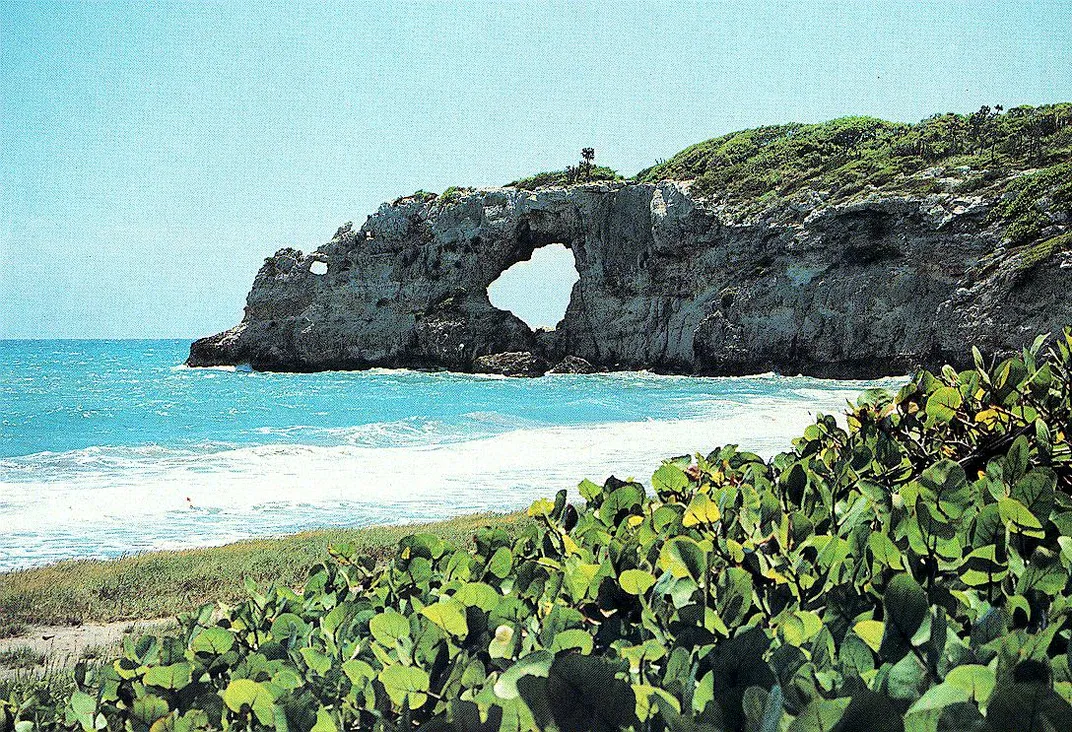Iconic Puerto Rico Landmark Collapses in Earthquake
Punta Ventana, a natural stone archway, fell amid a spate of earthquakes that have been rattling the island
/https://tf-cmsv2-smithsonianmag-media.s3.amazonaws.com/filer/ff/97/ff97b8c3-8d22-497a-b5f7-80e5eb6ef4d8/ap_20006799658128.jpg)
Over the past several weeks, Puerto Rico has been experiencing hundreds of small earthquakes, with the first large one rattling the island on Monday morning. The 5.8 magnitude quake knocked homes off their foundations, sent rockslides tumbling onto roads and affected power in some areas, Jim Wyss of the Miami Herald reports. Tremors also led to the collapse of one of Puerto Rico’s iconic natural landmarks: Punta Ventana, a striking stone archway along the southern coast.
The outcrop of Punta Ventana, or “Window Point,” is so called because it once formed a window-like circle offering beautiful views of the sea. Located in the municipality of Guayanilla, the site wasn’t easy to access; the only way to reach it was through a private mango farm, according to Gizmodo’s George Dvorsky. But Punta Ventana was nevertheless “one of the biggest tourism draws of Guayanilla,” Denniza Colon, a 22-year-old local, tells Wyss.
Glidden Lopez, a spokesman for the municipality, said that the landmark had started showing signs of damage last week due to seismic activity. By January 3, a lower portion of the window had broken off.
“Playa Ventana has collapsed,” Lopez wrote in a Facebook post, according to Wyss. “Today our icon is nothing but a memory.”

Monday’s seismic event was followed by an even larger 6.4 magnitude earthquake, which rocked Puerto Rico early Tuesday morning. The quake caused “strong to very strong” shaking in southern parts of the U.S. territory, but was “widely felt” across the island, according to the United States Geological Survey. Four strong aftershocks—measuring 5.6, 5.2, 4.5 and 5.8 magnitude—followed, reports Adeel Hassan of the New York Times.
A 77-year man died, there were widespread power outages, and 300,000 customers were left without water service, according to CNN. Homes sustained serious damage.
The earthquakes come as a harsh blow for Puerto Rico, which is still recovering from the disastrous fallout of Hurricane Maria. According to Alejandra Rosa and Patricia Mazzei of the New York Times, homes still bearing signs of damage from the 2017 hurricane have now been struck again by the quakes. The home of one Héctor Luis Rodríguez, for instance, has been covered with a tarp since Maria due to roof damage; now, Rodríguez tells the Times, his walls have “cracked open everywhere inside.”
Puerto Rico Governor Gov. Wanda Vázquez Garced declared a state of emergency following Tuesday’s quakes. “We have responded to many difficult situations, and here we are once again ... helping our people move forward,” she said during a news conference, according to CNN.
Squeezed between the border of the North American and Caribbean tectonic plates, Puerto Rico is no stranger to earthquakes. In 1918, for instance, a strong quake triggered a tsunami and killed nearly 120 people on the island. But “major earthquakes in the southwestern part of Puerto Rico have been unusual in recent history,” write Rosa and Mazzei. The last significant tremors in the area, which had a magnitude of around 4.1, date back to 1991 and 1999.
The rattling of the recent quakes have caused frayed nerves among Puerto Rico’s residents, who fear another natural disaster like Hurricane Maria. Nelson Torres Yordán, the mayor of Guayanilla, has called on the island’s government to send social workers to help calm locals fears.
“Things are really very tense about what has been going on,” he tells Rosa and Mazzei, “because this is not normal—so many tremors.”